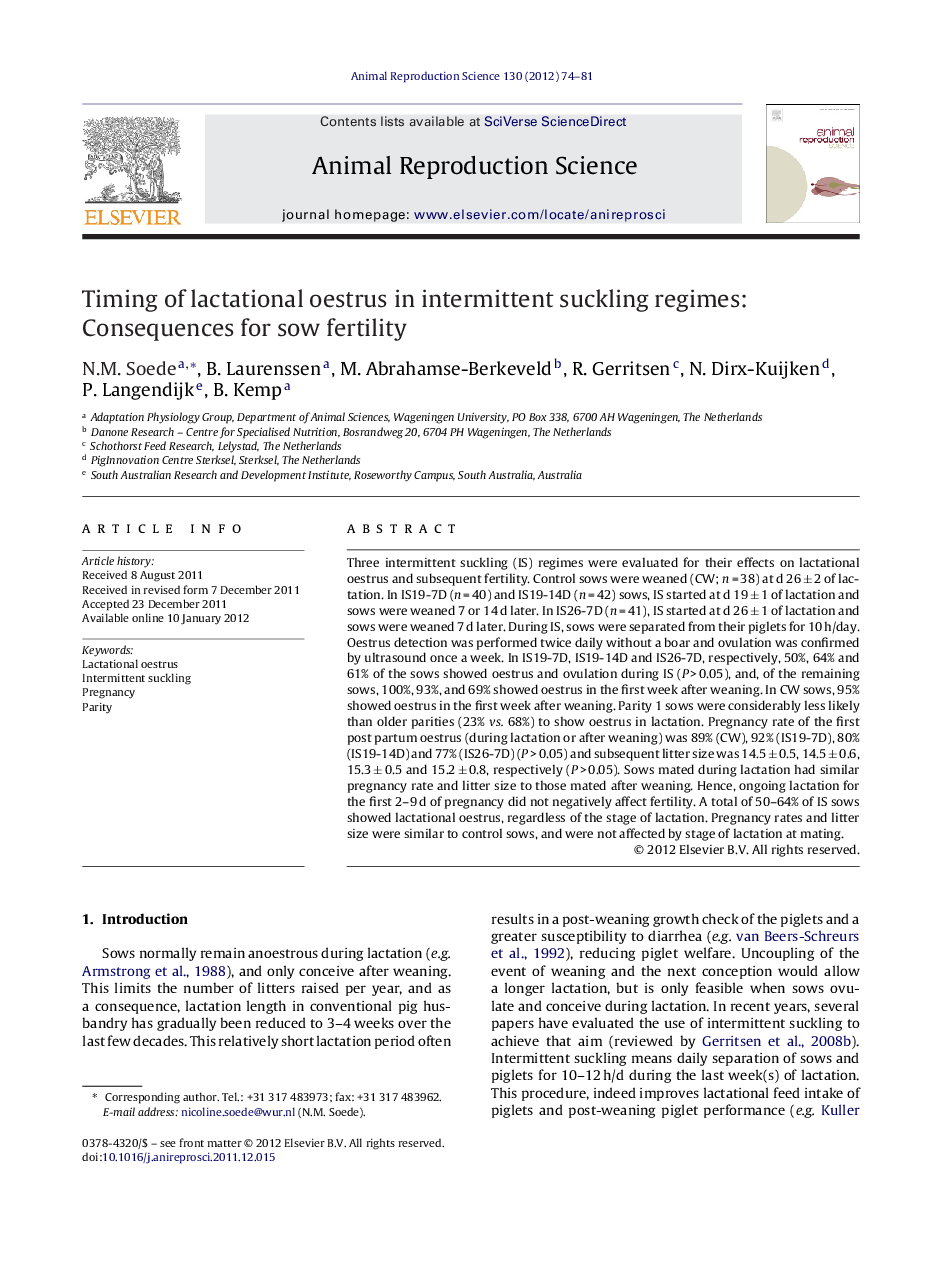| Article ID | Journal | Published Year | Pages | File Type |
|---|---|---|---|---|
| 2073309 | Animal Reproduction Science | 2012 | 8 Pages |
Three intermittent suckling (IS) regimes were evaluated for their effects on lactational oestrus and subsequent fertility. Control sows were weaned (CW; n = 38) at d 26 ± 2 of lactation. In IS19-7D (n = 40) and IS19-14D (n = 42) sows, IS started at d 19 ± 1 of lactation and sows were weaned 7 or 14 d later. In IS26-7D (n = 41), IS started at d 26 ± 1 of lactation and sows were weaned 7 d later. During IS, sows were separated from their piglets for 10 h/day. Oestrus detection was performed twice daily without a boar and ovulation was confirmed by ultrasound once a week. In IS19-7D, IS19-14D and IS26-7D, respectively, 50%, 64% and 61% of the sows showed oestrus and ovulation during IS (P > 0.05), and, of the remaining sows, 100%, 93%, and 69% showed oestrus in the first week after weaning. In CW sows, 95% showed oestrus in the first week after weaning. Parity 1 sows were considerably less likely than older parities (23% vs. 68%) to show oestrus in lactation. Pregnancy rate of the first post partum oestrus (during lactation or after weaning) was 89% (CW), 92% (IS19-7D), 80% (IS19-14D) and 77% (IS26-7D) (P > 0.05) and subsequent litter size was 14.5 ± 0.5, 14.5 ± 0.6, 15.3 ± 0.5 and 15.2 ± 0.8, respectively (P > 0.05). Sows mated during lactation had similar pregnancy rate and litter size to those mated after weaning. Hence, ongoing lactation for the first 2–9 d of pregnancy did not negatively affect fertility. A total of 50–64% of IS sows showed lactational oestrus, regardless of the stage of lactation. Pregnancy rates and litter size were similar to control sows, and were not affected by stage of lactation at mating.
